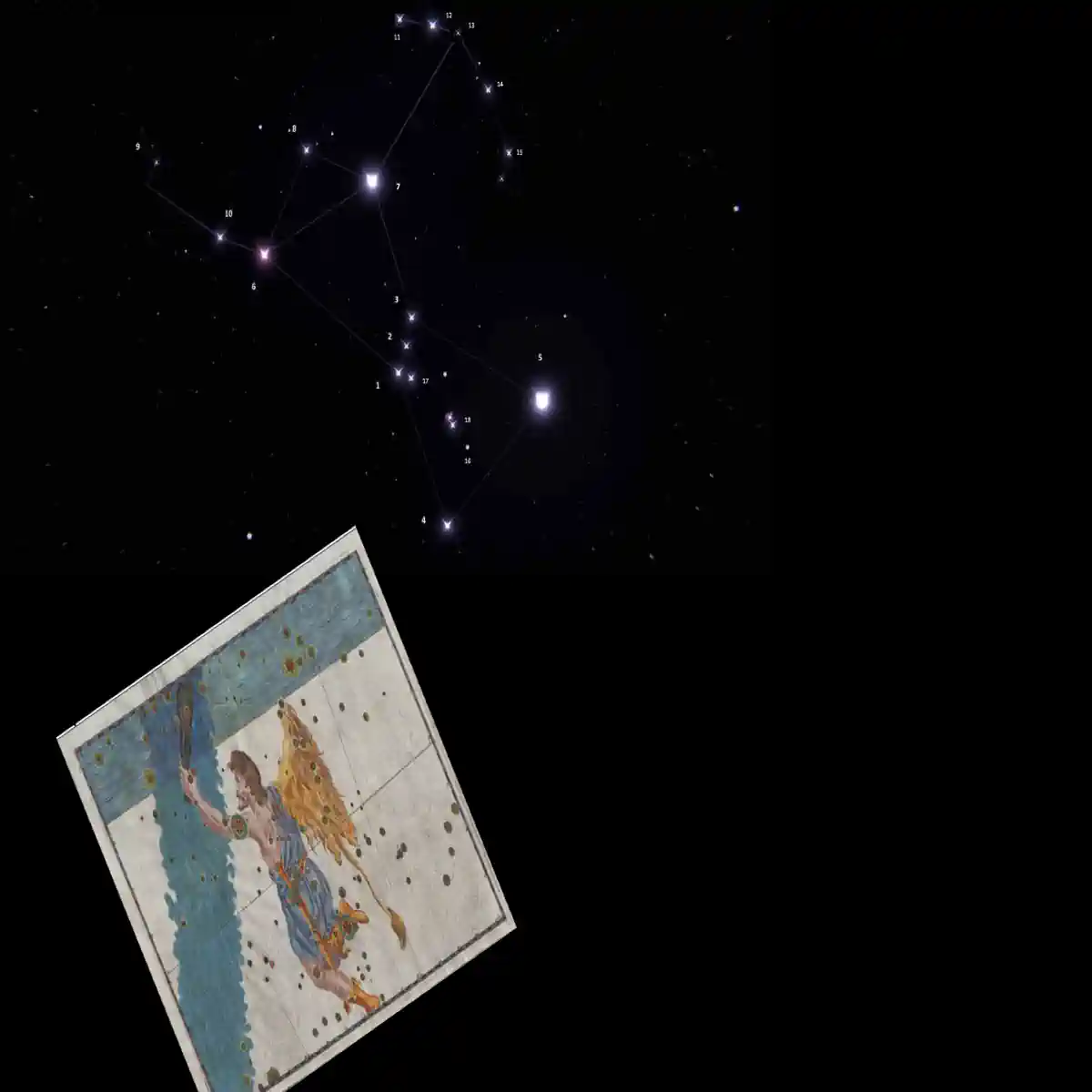01. Alnitak (ζ Orionis, Zeta Orionis).
Blue super giant star, and actually a triple star system consisting of (Aa, the blue super giant, Ab a blue sub giant and B a blue giant).
Sometimes called the East end of the belt, so on your right as you look up into the night sky in the Northern hemisphere, or sometimes called the girdle (girdle (or another name for a belt) is the direct translation from Arabic of Alnitak).
Part of the belt asterism, it has a magnitude of 1.74, and is ~1,260 light years away.
The flame nebula (giant cloud of dust and gas in space) and horse head nebula are close by to this star, though these are not generally visible to the naked eye.
02. Alnilam (ε Orionis, Epsilon Orionis).
A blue supergiant star located in the center of Orions belt.
Anilam is Arabic for string of pearls.
Sometimes called the middle of the belt, this region was said by some to contain the entrance to the pearly gates, or the afterlife.
The star is ~2000 light years away and therefore is the farthest from us, because it is a giant though it still appears as one of the brightest stars in the constellation and is the brightest star in the belt.
Part of the belt asterism, it has a magnitude of 1.70.
03. Mintaka (δ Orionis, Delta Orionis).
A binary star system or blue super giant star, it is actually made up of at least five other stars (Aa1, Aa2, Ab, B and HD36485).
Mintaka is sometimes called the West end of the belt. it appears on the left hand side of the belt.
Minitaka is also the Arabic for belt.
Part of the belt asterism it has a magnitude of 2.23, and is ~1,200 light years away.
04. Saiph or Saif (κ Orionis, Kappa Orionis).
A blue-white supergiant star sometimes called the right knee of the giant.
Literally the name of this star means sword (though technically it is at the base of the sword asterism).
Part of the main trapezium, it appears on bottom left hand side of when viewing in the Northern hemisphere.
Saiph has a magnitude of 2.07 and is 650 light years away.
05. Rigel (β Orionis, Beta Orionis).
A triple star system and blue supergiant star located at the foot of Orion.
One of the brightest stars in the group, and the sixth brightest star in the sky, it forms the right foot (bottom) of the skirt.
Part of the main trapezium, it appears on bottom right hand side when viewing in the Northern hemisphere.
Rigel has a magnitude of 0.18, and is 863 light years away.
06. Betelgeuse (α Orionis, Alpha Orionis)
A red supergiant star located at the right shoulder or armpit of Orion (so on the left assuming he is facing you) , the star is nearing the end of its life.
Part of the main trapezium, it appears on top left hand side of when viewing in the Northern hemisphere.
Betalgeuse is the second brightest star in Orion, it has a magnitude of 0.42, and is 548 light years away.
07. Bellatrix (γ Orionis, Gamma Orionis).
A blue-white giant star located at the shoulder of Orion.
Meaning literally the female warrior it is sometimes called the warrioress, sometime called the Amazon star (after a tribe of female warriors) and is the left arm or shoulder holding the shield or lionskin.
Part of the main trapezium, it appears on top right hand side of when viewing in the Northern hemisphere.
Bellatrix is the third brightest star in Orion it has a magnitude of 1.64 and is 250 light years away.
08. Meissa (λ Orionis, Lambda Orionis or Heka or Hatya).
A blue-white giant star.
Forming the head asterism of Orion, it is sometimes called the Shining or the Shining one.
Meissa has a magnitude of 3.47 and is 1,320 light years away.
09. Haldus (χ Orionis).
Has a magnitude of 4.49.
11. Pi:1 Orionis.
The first (top) star of the bow or lion shield of Orion.
12. Pi:2 Orionis.
The second star of the bow or lion shield of Orion.
13. Tabit (φ Orionis). Pi-3 Orionis.
Near where the hand joins the shield.
Has a magnitude of 4.43.
14. Pi:4 Orionis.
The fourth star of the bow or lion shield of Orion.
15. Pi:5 Orionis.
The fifth star of the bow or lion shield of Orion.
16. Thabit (υ Orionis).
A blue sub-giant star.
Sometimes called the endurer.
Has a magnitude of 4.36.
17. Sigma Orionis (σ Orionis).
Has a magnitude of 3.88.
18. Hatysa or Hatys (ι Orionis, Iota Orionis).
Sometimes called Nair al-Saif means, this means bright in the sword, or bright one of the sword, as it is the brightest star of the sword of Orion , located at its tip.
Hatysa is a multi star system and has three visible components designated Iota Orionis A, B and C. Iota Orionis A is a massive binary, with components Iota Orionis Aa1 (officially named Hatysa as here and Aa2, and Ab).
Has a magnitude of 4.35.
The backbone of the Sword is formed by three stars: from north to south, these are c Orionis, Theta Orionis and Hatysa. Theta Orionis, includes a complex cluster known as the Trapezium and the stars of this group are the main source of illumination for the Orion Nebula (sometimes called Messier 42 or M42).
